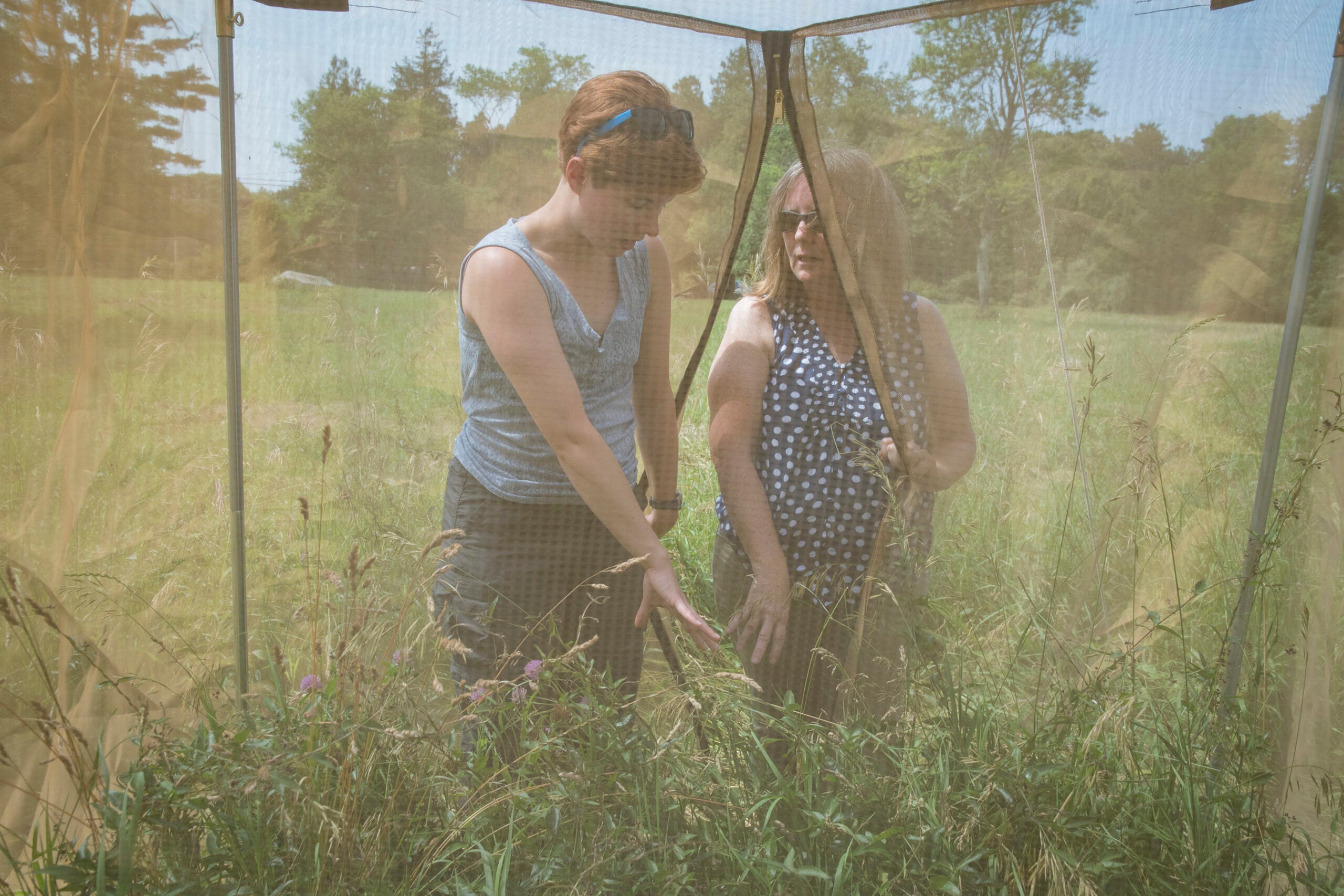KINGSTON, R.I. — July 31, 2018 — For students studying the natural sciences at the University of Rhode Island, working in a lab is a coveted campus job. Many students gravitate toward labs that conduct research in their field, but at the Biocontrol Laboratory, students work in the lab and in the field to combat invasive species.
They experience rearing insects in the lab and then put that experience to work in the natural environment.
Biocontrol is, as Laboratory Manager Lisa Tewksbury said, “putting the food web back together” by using insects that specifically feed on invasive species to control their populations. For example, one of the lab’s most recent projects uses the Hypena opulenta, a type of moth native to Europe, to help control the black and pale swallow-wort, an invasive vine.
“It’s for people who love insects, but also love plants,” Tewksbury said. “I get a lot of pre-med students who don’t know where to get lab experience, but want to know what research is all about.”
Last year, the Biocontrol Lab was awarded a permit by the U.S. Environmental Protection Agency to release the moth in concentrated areas, but not before doing extensive research conducted largely by students.
May 2018 graduate Courtney Graham, a math and biology major from North Kingstown, came for the experience two years ago but stayed for the bugs. She’s done a great deal of maintenance work for the swallow-wort project, like caring for the potted swallow-wort in the greenhouse, setting up moths to mate, caring for the larvae, determining the sex of pupae, and logging data.
“The experience was really helpful in letting me know that working with insects is what I can and want to do,” Graham said.
Last summer, she surveyed areas on Naushon Island, Massachusetts before the lab released Hypena in the fall. This summer, she helped worked with other students to release about 200 larvae in the cages on Naushon.
“It helped me decide that I want to be on the application side of science,” Graham said.
Rebecca Donegan, a senior from West Greenwich, wasn’t a huge fan of insects before she started working for the lab, but they’re growing on her, she said. She works primarily in the field maintaining the swallow-wort sites, and collects data about the Hypena larvae and adults.
“Every so often you get an escaped adult [moth] that flies in your face,” Donegan laughed. “But going out into the field is a good break from routine.”
Shiloh Clerjeste, a junior biotechnology major from Providence, agreed. He said that the lab builds and expands upon the work he’s done in his classes, and gives him an accurate representation of what working in a lab is like.
“I’m learning new concepts, like life cycles and terminology. All things I’ve never looked into before,” Clerjeste said. “There’s more here than meets the eye.”
As a freshman, Johnia Gomez of Meriden, Connecticut, began working in the lab last October. She said the lab provides a little “pocket of stability” during the day in between classes.
“When everything was new and changing, the quarantine lab never changes,” Gomez said. “It gives you a nice break during the day to sit down and work on something you’re knowledgeable about.”
All of the student workers agreed that the lab has given them incredible opportunities to study science in such a unique field. Their favorite part of the program is the relationships that they build with each other and with the lab managers and professors.
“This really is a family setting,” Clerjeste said. “You’re relying on each other for help and enjoy the experience together. It’s an encouraging environment where people aren’t afraid to ask questions and rely on the resources available to them, like Lisa.”
“It feels really good knowing that I made an impact at URI and that someone will remember me and the work I did,” said Graham.

